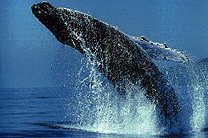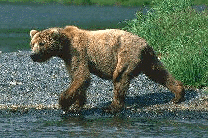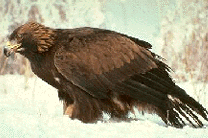Comparative Morphology
Groups of organisms that are closely related will have homologous structures--consider a whale flipper, a bear paw, a crocodile foot, or an eagle wing (right). These are the same structures slightly modified for different uses. As well, organisms from similar groups have the same fundamental pattern within their organ systems, in other words they have homologous organs. Even though they may be superficially dissimilar and have different functions, they are homologous structures because each consists of almost the same number and types of bones, blood vessels, nerves, or muscles arranged in the same manner and they all having a similar mode of development. This strongly suggests a common ancestor.
Another example of morphologic evidence is the existence of vestigal organs. In almost every type of plant and animal there are organs, or parts of organs, that are useless and degenerate. Within the human body of today there are more than 100 vestigal organs for which the best known example is the appendix, which produces a substance to help digest cellulose, which we do not eat. Others include the coccyx (which is the fused tail vertebrae), wisdom teeth, and the muscles behind the ears. All of these organs were functional in some ancestral animal but are of no use to humans today. When an organ or appendage is no longer used, it doesn't matter to our survival if it degenerates. If that organ were essential to the animal's survival, and it stopped working, then the animal would die.
Many other species have vestigal organs: both whales and pythons have bones which are imbedded in the flesh of their abdomen. These represent vestigal hind legs. Other examples include wingless birds with vestigal wing bones and blind animals which burrow or dwell in caves, but have useless eyes.



